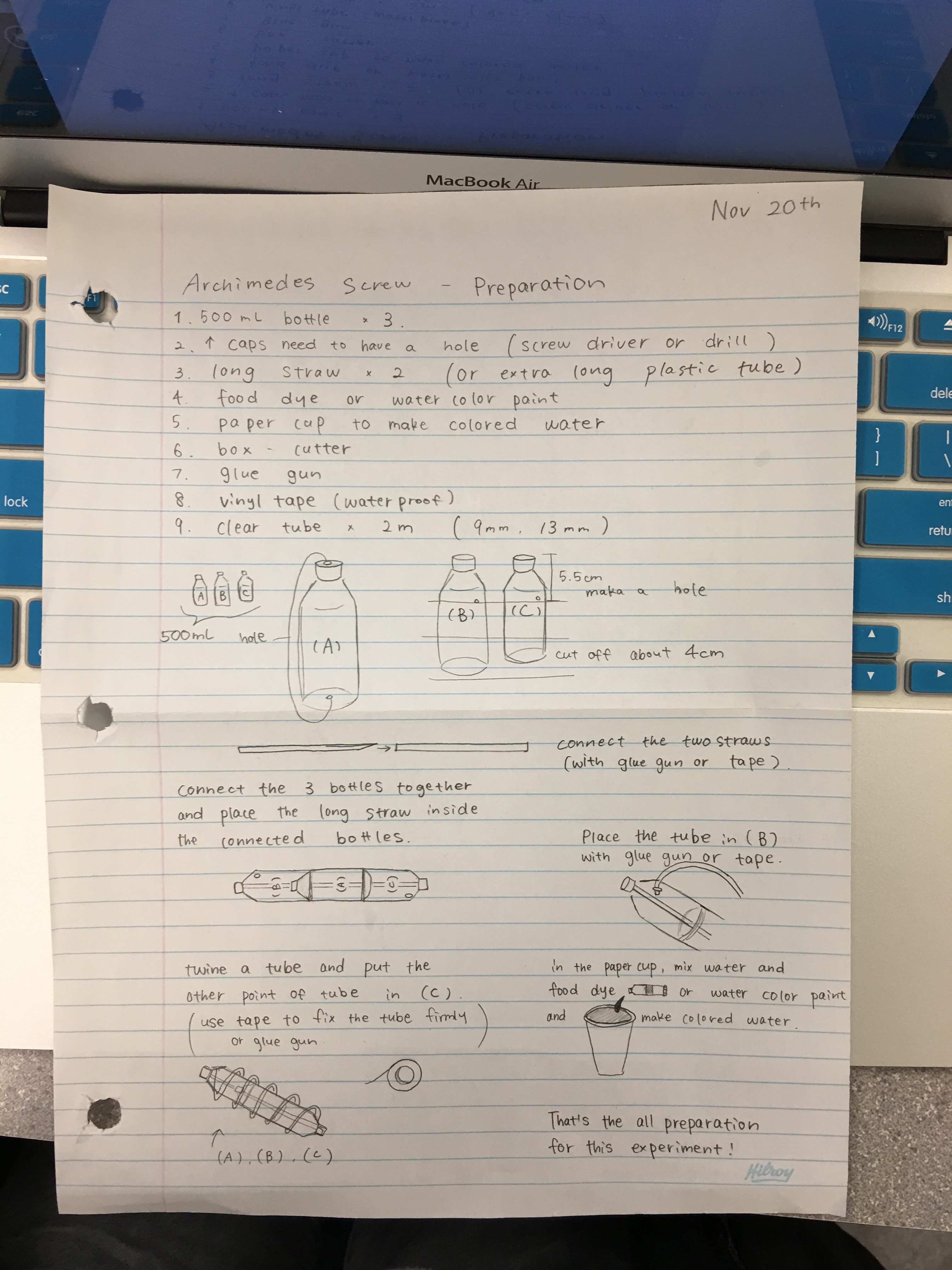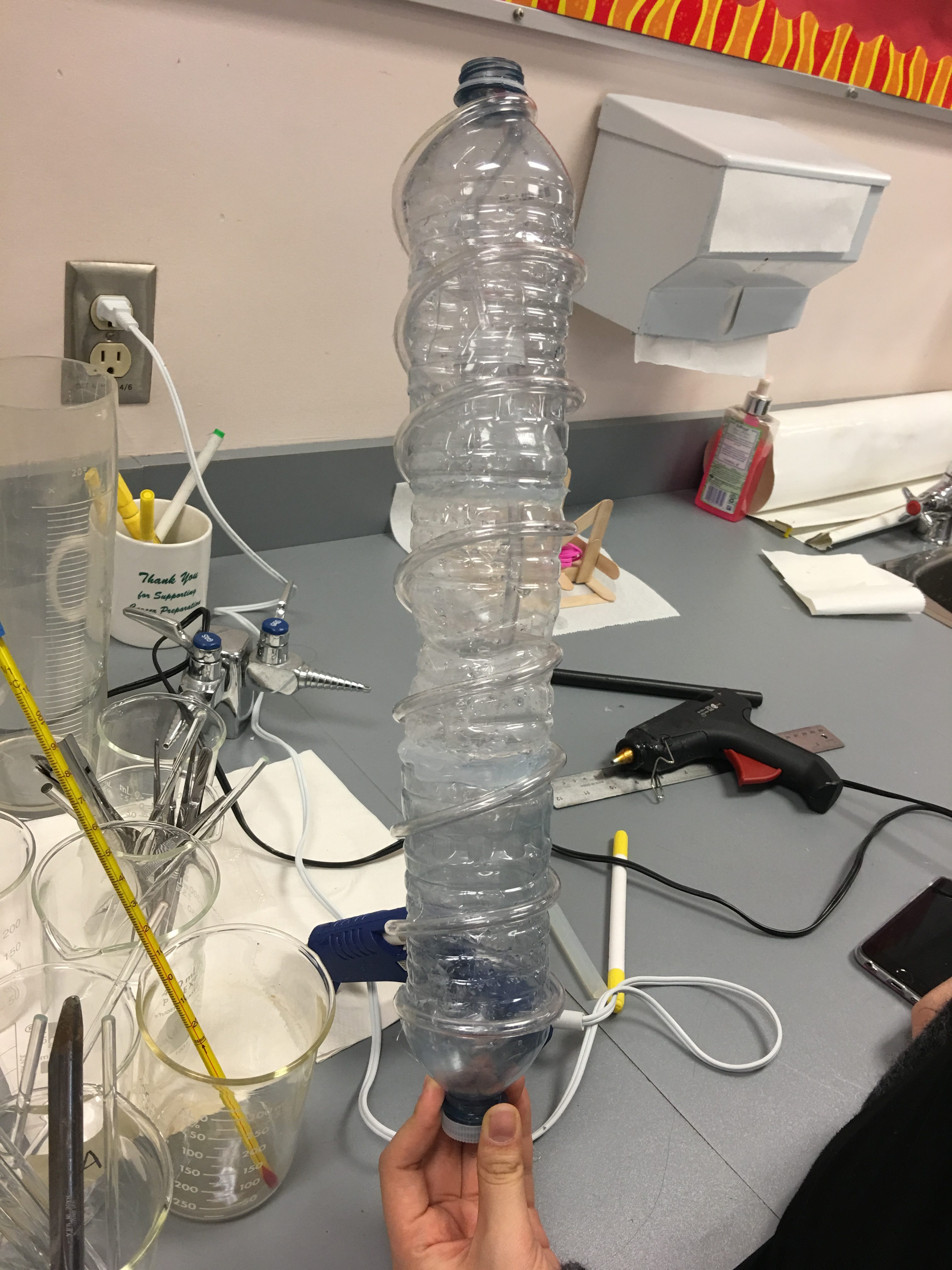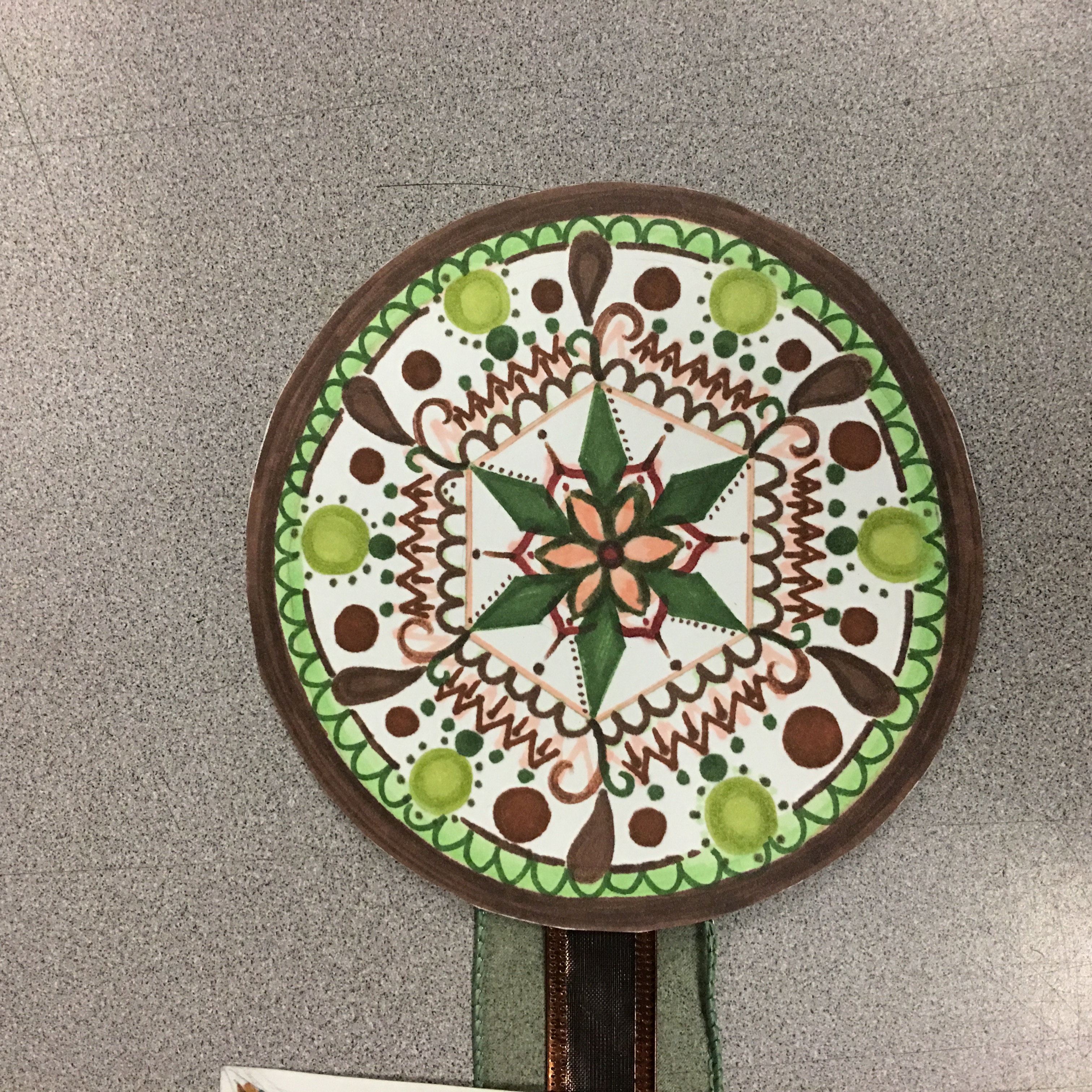Archimedes screw
- design and building process/ construction of invention
day one:
1.design drawing

2. made holes on 3 bottles

day two: cut off bottom of two bottles

day three:connect 3 bottles together, and twine the tube around the bottle.(same like drawing design) 

day four: mix water and ink. put the water into the bottle.
https://youtu.be/0Tj3UQseWr0
On a Sunday, Archimedes and his classmates went on a wooden boat, driving slowly on the Nile, and his eyes were dazzled by the charming scenery. Suddenly he saw a group of people carrying water in a bucket. “why do they carry water?” he asked.
“The river bed is low and the farmland is high, so the farmer has to carry the water.” A local student told him. “So the efficiency of carrying water is too low, and it is not sure how many barrels are to be carried by the water.” Archimedes had a sympathy for the peasants. The student said disapprovingly, “people do this. Do you have any good ideas?”
When Archimedes came back, he always had a picture of the farmer struggling with water. “Can you let the water run high?” Archimedes began to think about this problem. Gradually, in Archimedes’ mind, there was a vision: “make a big spiral and put it in a cylinder. In this way, when the spiral is turned, the water can be carried aloft along the spiral groove.
Archimedes immediately drew a sketch of the idea. He took this sketch to find the carpenter and asked the master to help him with a tool for pumping water. By Archimedes’s advice, the carpenter made a strange thing. Archimedes moved this thing to the river and put one end of it into the water, then gently shook the handle. The water was shaking the handle and coming out from the top of the thing. The water was flowing high.
The farmer, who came to see, was fascinated by this amazing thing. They praised Archimedes for doing a great deed for the peasants. Soon, the spiraling pumps were spreading in the Nile valley, even wider. This pump is called the archimedean screw pump. Until now, some modern factories still use this archimedean screw pump to move fluid and powder.
- Explanation of physics involved
Produced by using mechanical rotating centrifugal force, make the water produces the speed, following the upward spiral pipe wall, in the water rushed to the pipe wall, the pipe wall will continue to generate thrust, making the water flow from the bottom to the top.

To move stationary water from one place to another, force has to be applied. The forces involved are gravitational and normal forces. When the screw turns a half rotation, it scoops up water and holds it in a fixed position. Because the angle of the screw (Archimedes’ screw cannot be vertical), gravity and the normal forces in the screw thread and wall cause the water to be in a stable equilibrium position (a state in which opposing forces are balanced).
https://zhidao.baidu.com/question/1693911927468659268.html
https://wenku.baidu.com/view/ae995061ddccda38376bafb9.html
https://zhidao.baidu.com/question/1385953321594911500.html
https://en.wikipedia.org/wiki/Archimedes%27_screw
http://www.softschools.com/inventions/history/archimedes_screw_history/14/
https://en.wikipedia.org/wiki/Archimedes%27_screw














